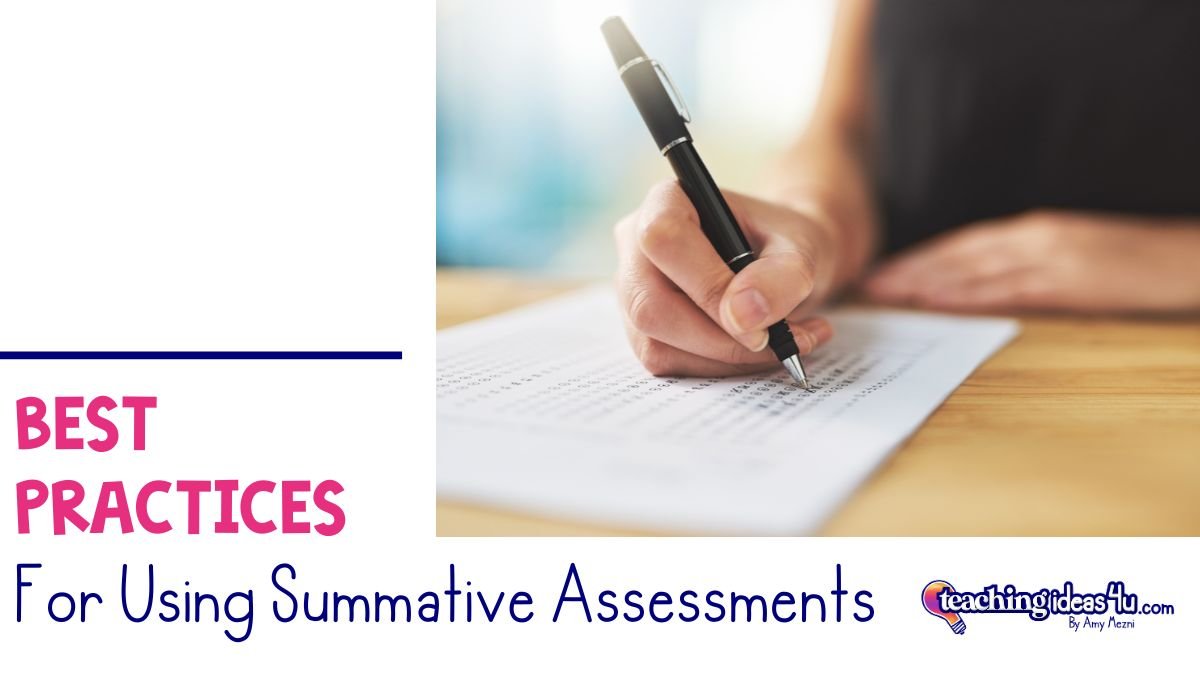Best Practices for Using Summative Assessments
In standards-based grading, summative assessments are meant to be evidence of students’ learning. Teachers use formative assessments as check-ins throughout a unit to make sure students have understood the concepts, while summative assessments are used at the end of the unit as proof of students’ mastery level.
Here are some best practices for using summative assessments.
One and Done
Ideally, assessments will be given once. They are snapshots of students' ability level at the time of the assessment. Giving multiple retakes allows students to guess and doesn’t give an accurate picture of their knowledge.
However, retakes could be allowed if a student had extenuating circumstances (like test anxiety) or has worked to improve their understanding of the skills and concepts.
Created Specifically for the Unit
A summative assessment should assess the skill and knowledge students learned in a unit. Therefore, they should be based on what was actually taught.
A summative assessment should not be randomly shared or borrowed without checking to see if it should be edited. Perhaps you didn’t cover some of the same information in your unit, so students won’t be fairly assessed.
Variety
Some students shine on a specific assessment format but bomb on others. Vary the type of summative assessment you use or provide choices to students.
For example, you might give an exam for one unit, but use a project-based assessment for the next. In yet another unit, you might give students choices that integrate different skills, such as a video, poster, or essay.
Focused on Target Standards
A summative assessment should focus on the skills and concepts taught within the unit. You should make sure that the core concepts are accurately assessed in whichever summative activity you use.
For example, if students need to understand the causes and effects of the Civil War, drawing a map of the battles wouldn’t demonstrate how well they mastered that information.
When creating a unit, you need to decide what are the core skills and knowledge students are expected to learn, then create the lessons and summative assessment to match them.
Also, a summative assessment could focus on just one target standard. A teacher may only want to assess students ability to use one grammar rule, such as commas or writing a thesis statement. In that case, they may use a single-point rubric to evaluate students’ mastery level.
On other summative assessments, teachers may want to assess multiple standards. An exam or a rubric with multiple skills might be better in that case.
I think of a unit as a loop. Summative assessments are the final piece of the loop, and they determine whether students are ready to begin the next loop or need to revisit the skills in the same loop. However, the summative assessment needs to be carefully developed using best practices to ensure that it actually assesses the target standards.
Learn More in My Assessment Series
Want to learn more about using assessments in your classroom? Check out my other blog posts in my Assessment Series.
3 Types of Classroom Assessment Every Teacher Should Use
How to Use Formative Assessments Effectively
Quick And Effective Formative Assessments
Best Practices for Using Summative Assessments
Pros & Cons of Different Summative Assessments
Beyond the Test Score: Understanding Assessment Barriers for Students

